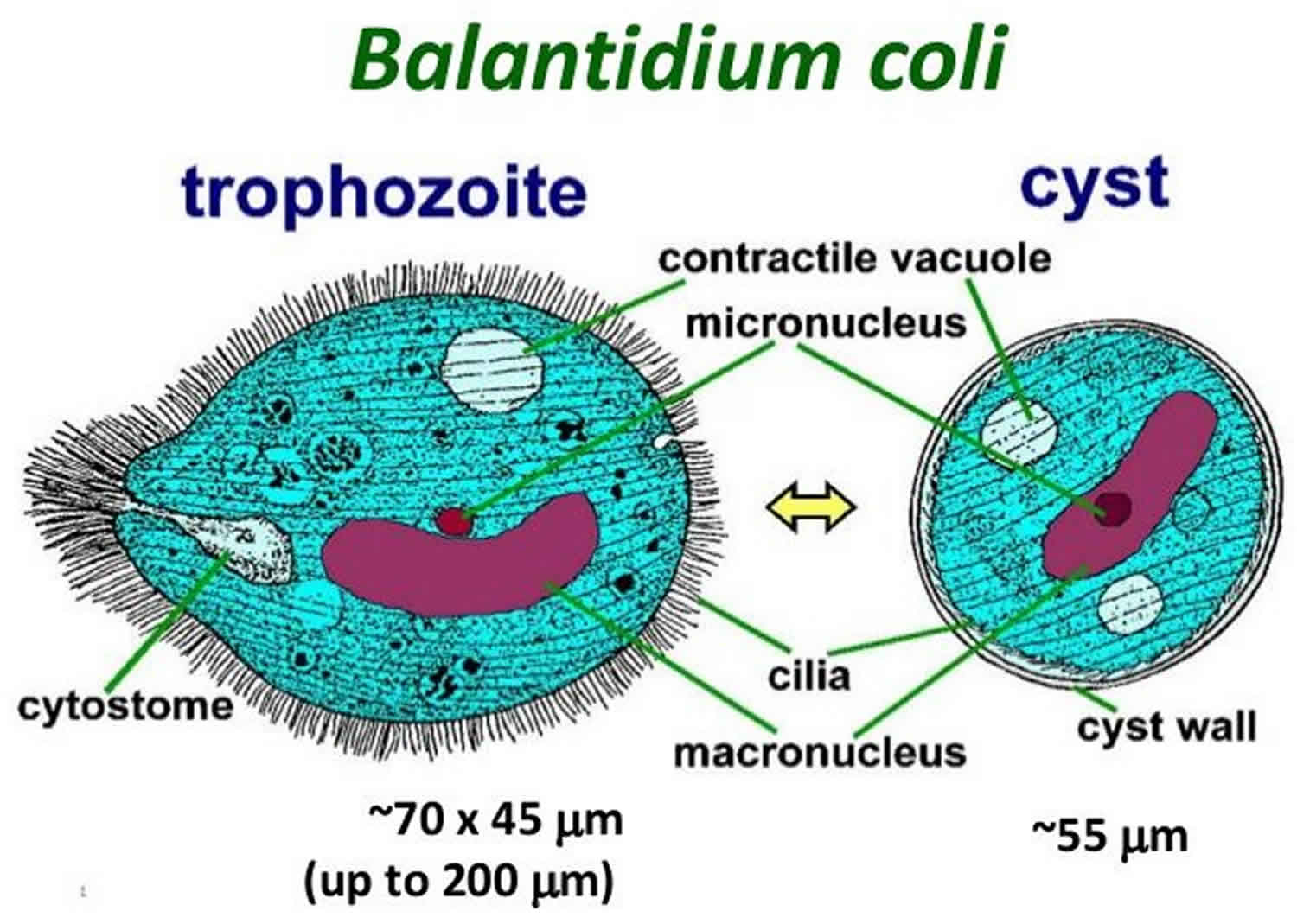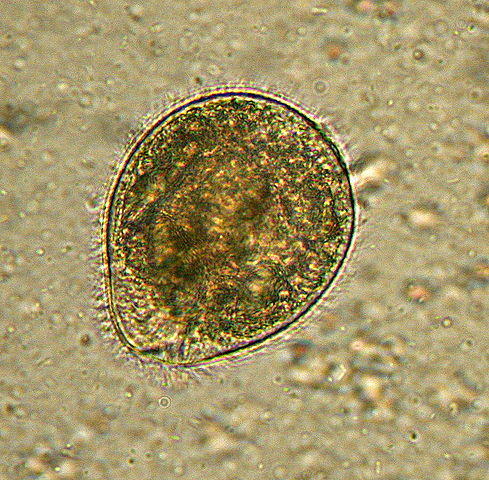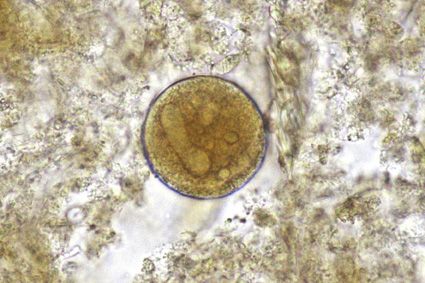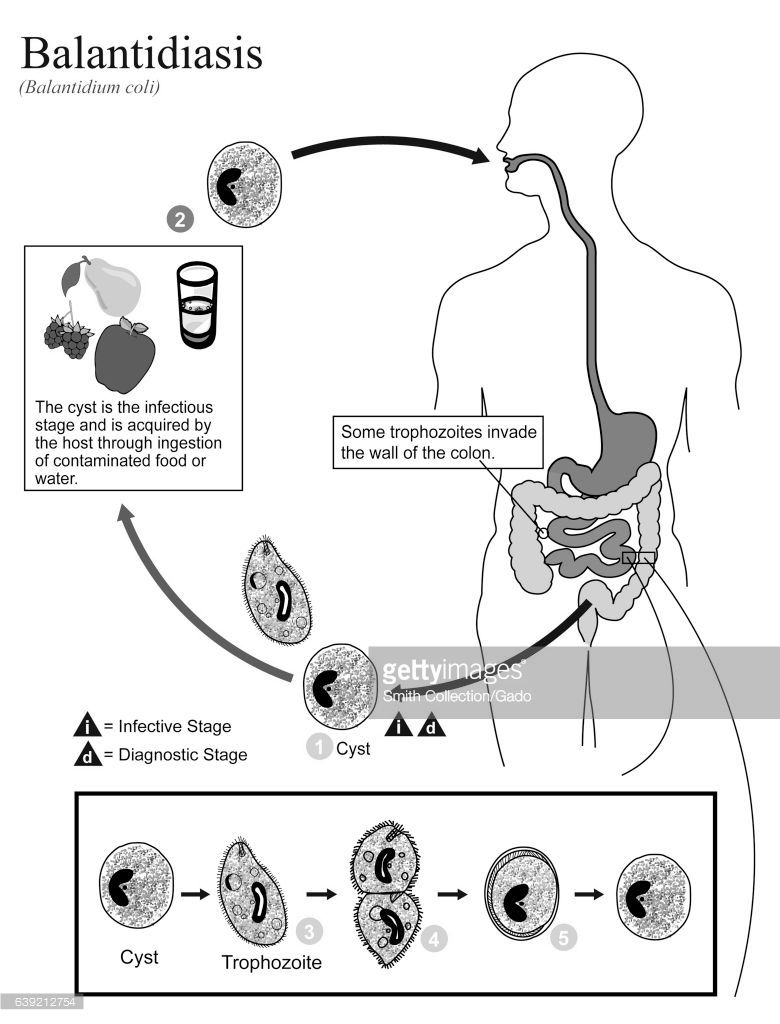Subphylum : Ciliophora
Balantidium coli
Geographical Distribution: Worldwide.
Habitat: Largest protozoal parasite inhabiting large intestine of man.
Also found in pigs and monkeys.
Morphology
Trophozoite
- Oval 50 to 200 µ × 40 to 70 µ, Surface is pointed with delicate cilia.
- Anterior endpointed and has cytostome.
- Posterior end is round.
- Cytoplasm contains kidney-shaped large macronucleus and small micronucleus.
Cyst
Oval, Thick, outer wall Cilia absent. Enclosed in a double-layered wall.



Life cycle
- No intermediate host is required.
- The cysts are passed in the stool.
- Infection occurs by ingestion of cysts with contaminated food or drinks.
- In the wall of intestine excystation occurs and trophozoites develop which live and subsequently multiply by binary fission on the mucosa of large intestine.

Transmission
Balantidium is the only ciliated protozoan known to infect humans. Balantidiasis is a zoonotic disease and is acquired by humans via the feco-oral route from the normal host, the pig, where it is asymptomatic. Fecally contaminated food and water are the common sources of infection in humans.
Pathology
- Rarely mucosal damage caused by trophozoites.
- Action of enzyme hyaluronidase produced by parasite may cause mucosal damage by superficial ulcer which may penetrate to sub-mucosa, so results diarrhea and later frank dysentery develops.
- Abdominal colic, nausea, and vomiting may occur.
Symptoms and signs
Usually asymptomatic in immunocompetent individuals, but the symptoms of balantidiasis include:[citation needed]
Intermittent diarrhea
Constipation
Vomiting
Abdominal pain
Anorexia
Weight loss
Headache
Colitis
Marked fluid loss
The most common ones are intermittent diarrhea and constipation or inflammation of the colon combined with abdominal cramps and bloody stools.
Laboratory Diagnosis
The diagnosis of balantidiasis can be considered when a patient has diarrhea combined with a probable history of current exposure to pigs (as pigs are the primary reservoir), contact with infected persons, or anal sexual contact.
- The diagnosis of balantidiasis can be made by microscopic examination of stools in search of trophozoites or cysts,
- Colonoscopy or sigmoidoscopy to obtain a biopsy specimen from the large intestine, which may provide evidence for the presence of trophozoites.
Prevention
Balantidium coli infection can be prevented when traveling by following good hygiene practices.
- Wash your hands with soap and warm water after using the toilet
- changing diapers
- before handling food.
4. Purification of drinking water.
5.Proper handling of food.
6.Careful disposal of human feces.
7.Monitoring the contacts of balantidiasis patients
Treatment: Tetracycline, metronidazole, and iodoquinol.

